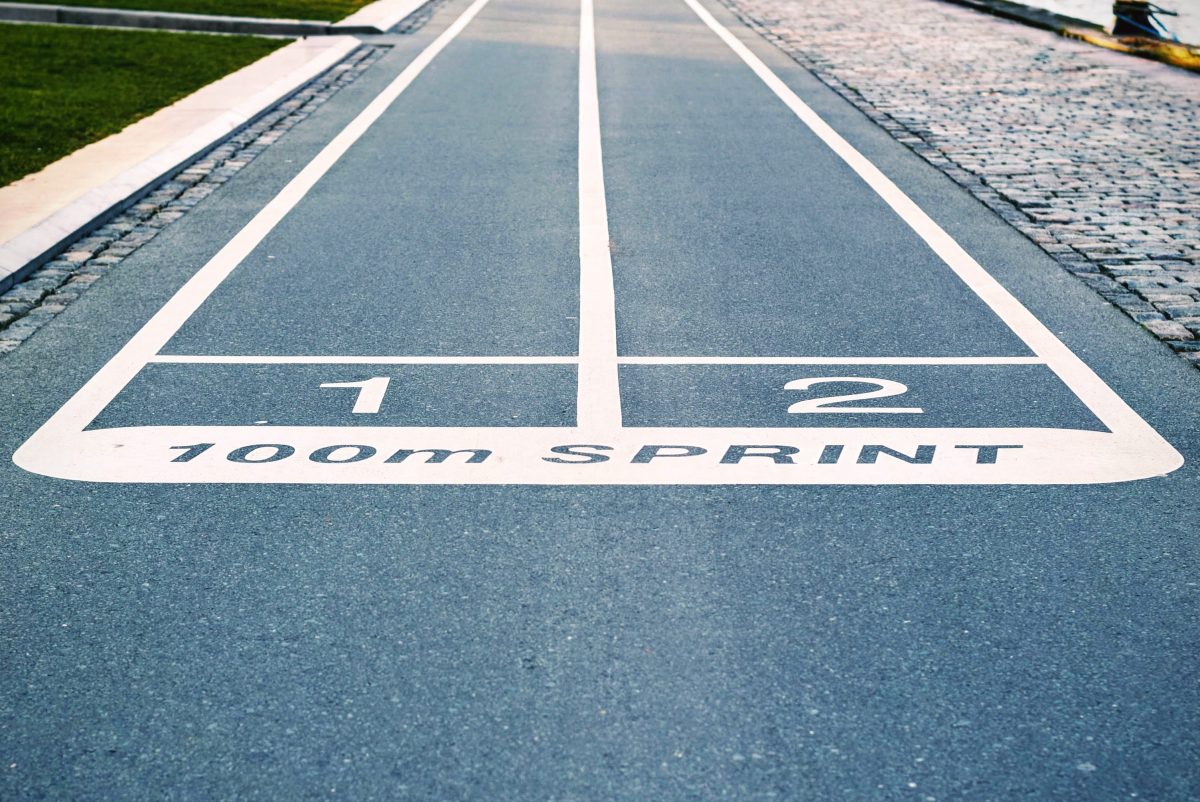The major determinant to increasing speed🔥🔥🔥 is the ability to propel our body in a forward direction.
During high speed running we generate force through the ground orientated both in a vertical and horizontal direction. It is how well we orientate this horizontally that mores so determine sprint performance. 🤔
This is relevant for track athletes👟, ball sports🏀, racquet sport🎾 or really anything that requires
short bursts of speed. So, most sports!!
The hip extensors (glutes and hamstrings) are the muscle group, predominantly responsible for generating this horizontal ground reaction force and in particular the hamstrings are believed to play a very important role.
Study by (Morin et al., 2015) showed athletes able to produce the highest amount of horizontal ground reaction force were able to highly activate there hamstrings just prior to striking the ground and also showed greatest amount of eccentric knee flexion torque – ‘force generated while the hamstring muscle is lengthening’.


Notice in the above picture, firstly the swinging leg. As this athlete powerfully drives the leg
through, momentum will carry his shin forwards quickly. Role of the hamstring here is to control that movement (eccentric knee flexion as described above) so he does not over stride and ‘hit the brakes’ (or tear his hamstring as it lengthens rapidly).
Secondary to this when looking at his push off leg, notice its horizontal orientation (to the ground) and hip extension (driving the leg behind him). The ability to transition from swing to stance rapidly places high demand on the hamstring muscle group. The Hamstrings must prepare for landing (foot strike), produce minimal deceleration and rapidly move the hip into extension to propel the body forwards. Superior capability of performing these actions has been shown to increase sprint performance (Morin et al., 2015; Sun et al., 2015)
In regard to hamstring injury, it can be seen why a decreased capacity of the hamstrings may lead to injury or recurrent injury, due to the significantly high loads that are placed on them.
Now, I am not saying the only reason for hamstring injury is fault of the hamstring muscle groups itself.
There are other potential factors, for example:
- pelvic positioning
- poor glute function
- lower back pathology
- core strength issues
Reason for this post is more so to pay attention to the large functional role the hamstrings have in sprinting itself and make sure this is not neglected in rehabilitation or training.
Quite often for example, clinically we may see an athlete complaining of constant or recurring hamstring ‘tightness or injury’. Despite always stretching, possessing good glute function and core strength they continue to acquire tight hamstrings or re-injure.
There is often the belief🤦♀️ that if my hamstrings are tight, they need to be stretched, and if I do this often enough, I won’t have tight hamstrings anymore. 🤔
In fact, what may be transpiring is constant overload of the hamstrings if they do not possess the capacity for performing the strenuous task of sprinting.
You can stretch all you like, if hamstring capacity is not addressed problems will most likely continue.
As explained, there may be various reasons for hamstring ‘problems’ though I’d like to address this possibility which is often neglected.
Happy running!
Morin, J.-B., Gimenez, P., Edouard, P., Arnal, P., Jiménez-Reyes, P., Samozino, P., . . .
Mendiguchia, J. (2015). Sprint Acceleration Mechanics: The Major Role of Hamstrings
in Horizontal Force Production. Frontiers in physiology, 6, 404-404.
doi:10.3389/fphys.2015.00404
Sun, Y., Wei, S., Zhong, Y., Fu, W., Li, L., & Liu, Y. (2015). How joint torques affect hamstring
injury risk in sprinting swing-stance transition. Medicine and science in sports and
exercise, 47(2), 373-380. doi:10.1249/MSS.0000000000000404
